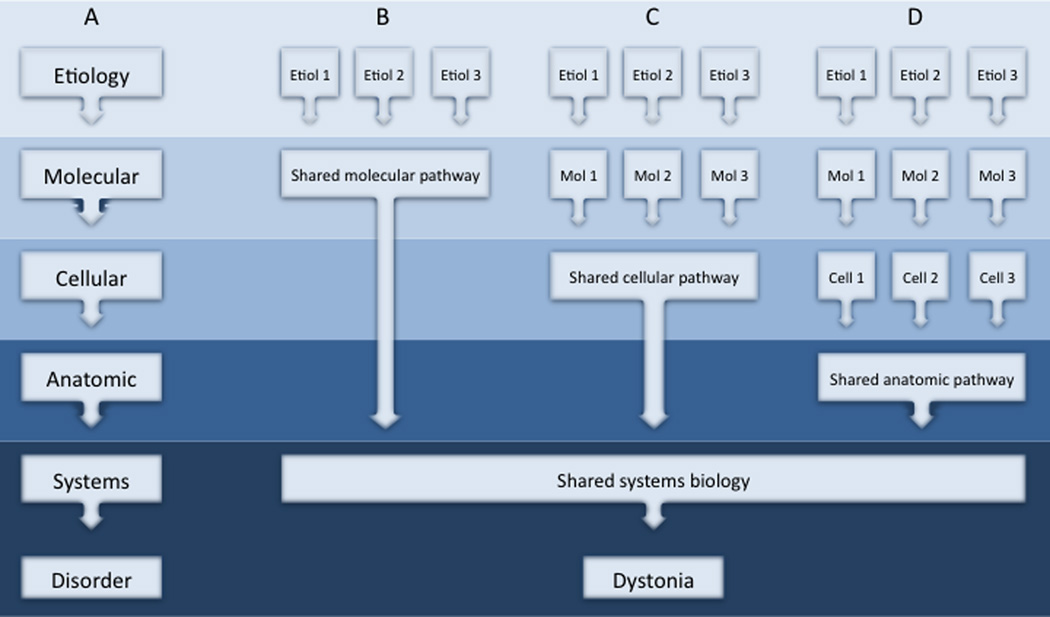Figure 1.
Conceptual model for similarities and differences among different dystonias. A simplified scheme for pathogenesis begins with a specific etiology and proceeds through a series of downstream processes in the pathogenesis of dystonia (A). Etiologically different types of dystonia may share a similar molecular pathway and similar subsequent pathogenesis (B). Alternatively, etiologically different types of dystonia may differ at the molecular level, yet disrupt the same neuronal population (C). Etiologically different types of dystonia instead may disrupt a common anatomical circuit (D). Ultimately, all may share some similar biological defect at the systems level to result in the patterns of muscle activity that define dystonia.

